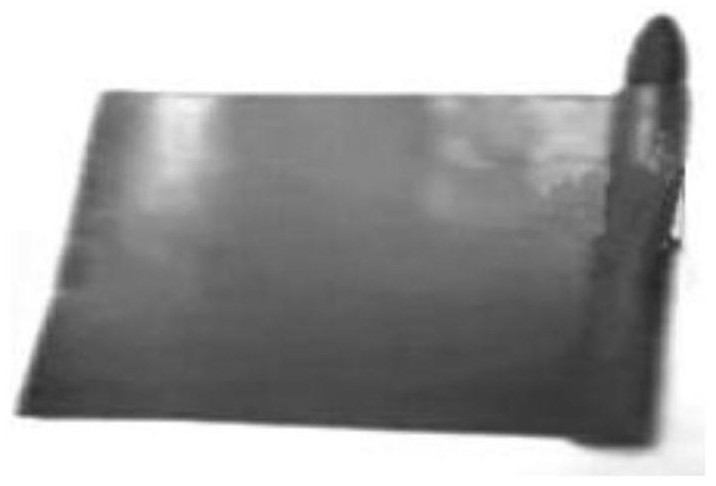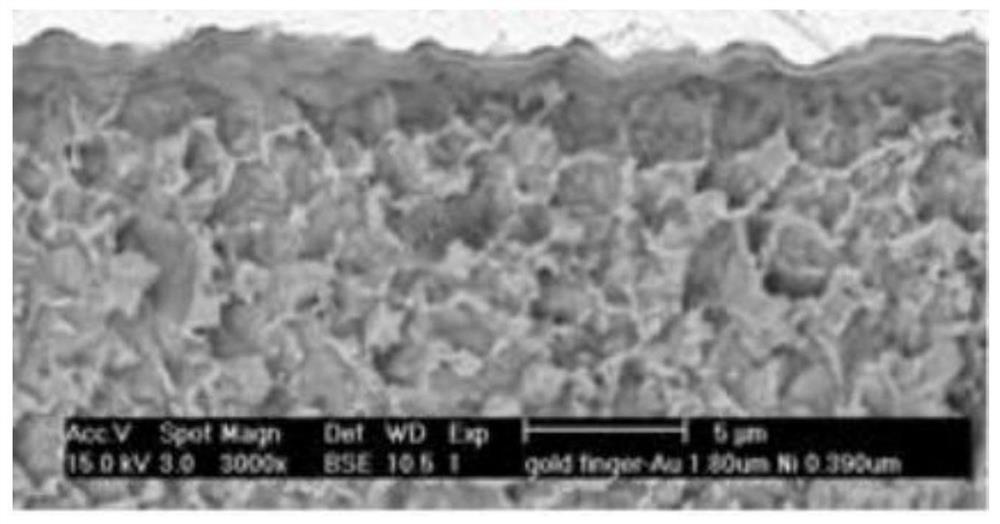A flexible lithium-ion battery electrode sheet using a backing layer and its preparation method
A lithium-ion battery and electrode sheet technology, which is applied in the field of electrochemistry, can solve the problems of inflexibility, bulkiness, and high self-discharge rate, and achieve the effect of strengthening mechanical strength and flexibility, not polluting the environment, and improving flexibility
- Summary
- Abstract
- Description
- Claims
- Application Information
AI Technical Summary
Problems solved by technology
Method used
Image
Examples
preparation example Construction
[0034] In the present invention, the preparation method of the flexible lithium-ion battery electrode sheet using the cushion layer includes: dispersing, stirring, preparation of cushion layer suspension, filtering, baking and rolling, and the specific implementation method is:
[0035] (1) Dispersion: use an organic solvent or deionized water as a solvent for the conductive agent, and ultrasonically disperse it at a dispersion concentration of 0.1 to 2 mg / ml to form a conductive agent slurry; use an organic solvent or deionized water as a solvent for the matrix , high-speed stirring dispersion, dispersion concentration of 0.5 ~ 3mg / ml.
[0036](2) Stirring: Add binder to the conductive agent slurry in step (1) to disperse for 2 to 3 minutes, then add the active material, mix thoroughly, then add the matrix dispersed in step (1), fully Stir to mix well to form a suspension slurry.
[0037] (3) Cushion suspension preparation: add nanocellulose to organic solvent or deionized w...
Embodiment 1
[0043] Take carbon nanotubes with a mass fraction of 5% and add them to isopropanol and sonicate for 20 minutes to prepare a conductive agent slurry; disperse lithium cobalt oxide particles with a mass fraction of 89% in the conductive agent slurry, stir at high speed for 5 minutes, and cobalt acid The surface density of lithium particles is 38mg / cm 2 Prepare a mixed solution of conductive agent and active material; then take nanocellulose with a mass fraction of 5% as a matrix and add isopropanol and stir at high speed for 5 minutes to form a base liquid, and mix the base liquid with the prepared mixed solution of conductive agent and active material Mix and stir at high speed for 5 minutes to prepare a suspension slurry; then take nanocellulose with a mass fraction of 1% as a cushion and disperse with isopropanol at high speed for 3 minutes, and the surface density is 1mg / cm 2 Prepare a cushion suspension; pour the cushion suspension into cellulose filter paper with a pore s...
Embodiment 2
[0048] Add carbon nanotubes with a mass fraction of 6% to isopropanol and sonicate for 15 minutes to prepare a conductive agent slurry; disperse graphite particles with a mass fraction of 83% in the conductive agent slurry, stir at high speed for 6 minutes, and press the graphite particles on the surface Density 25mg / cm 2 Prepare a mixed solution of conductive agent and active material; take nanocellulose with a mass fraction of 8% as a matrix, add isopropanol and stir at high speed for 8 minutes to form a base liquid, and mix the base liquid with the prepared mixed solution of conductive agent and active material , stirred at a high speed for 8 minutes, and prepared into a suspension slurry; the mass fraction was 3% nanocellulose and isopropanol were dispersed at a high speed for 5 minutes, and the surface density was 0.8 mg / cm 2 Prepare a cushion suspension; pour the cushion suspension into cellulose filter paper with a pore size of 70 microns for vacuum filtration, and when...
PUM
 Login to View More
Login to View More Abstract
Description
Claims
Application Information
 Login to View More
Login to View More - R&D
- Intellectual Property
- Life Sciences
- Materials
- Tech Scout
- Unparalleled Data Quality
- Higher Quality Content
- 60% Fewer Hallucinations
Browse by: Latest US Patents, China's latest patents, Technical Efficacy Thesaurus, Application Domain, Technology Topic, Popular Technical Reports.
© 2025 PatSnap. All rights reserved.Legal|Privacy policy|Modern Slavery Act Transparency Statement|Sitemap|About US| Contact US: help@patsnap.com



